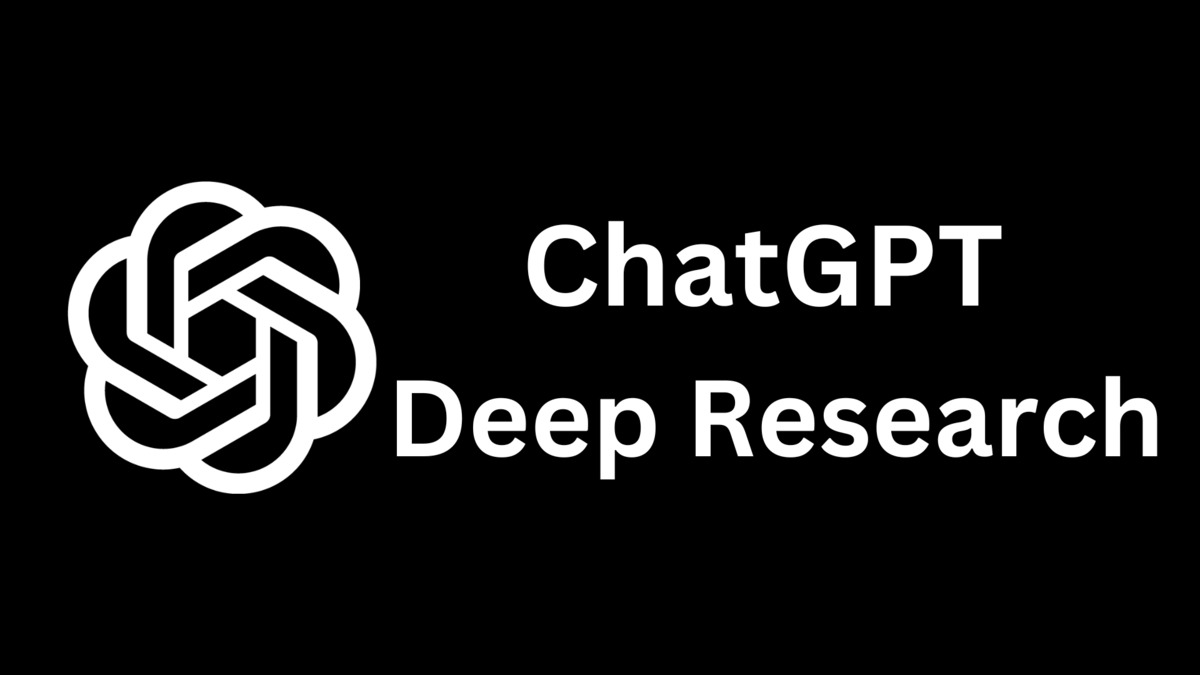Market analysis is the process of studying a market’s size, trends, competitors, and customer segments to inform business strategy.
It provides detailed information about industries, customers, competitors, and the supply–demand relationship for a product or service.
By analyzing these factors, companies can make data-driven decisions.
For example, a thorough market analysis helps back up a business plan with data, identify early market opportunities, spot competitors, and estimate market attractiveness.
In short, market analysis gives businesses the insights needed to avoid costly mistakes and capitalize on strengths and trends.
Introducing ChatGPT’s Deep Research
OpenAI’s Deep Research is a new ChatGPT feature (launched in 2025) that turns the AI into an autonomous research assistant.
Unlike a regular ChatGPT chat, Deep Research “conducts multi-step research on the internet for complex tasks,” gathering, interpreting and synthesizing information from hundreds of web sources into one report.
According to OpenAI, this feature accomplishes in minutes what might take a human analyst many hours.
Under the hood, Deep Research uses a specialized version of the new GPT-4.o3 model optimized for browsing, data analysis, and reasoning.
Deep Research is designed for intensive knowledge work – fields like finance, science, engineering, or even detailed shopping research where thorough, precise answers are needed.
Each Deep Research output is fully documented with citations and a summary of its reasoning, making it easy to verify information.
In practice, the tool can find niche or non-intuitive data (e.g. from PDFs, images, or specialized sites) that would take a human much longer to gather.
By offloading this time-consuming work to ChatGPT, users save hours of manual effort.
How to Use Deep Research for Market Analysis
Using ChatGPT’s Deep Research is straightforward. In the ChatGPT interface, select the “Deep Research” mode and enter a clear, focused query about your market analysis needs.
For example, you might ask: “Perform a market analysis of the electric bicycle industry in the U.S., including market size, key trends, major competitors, and consumer demographics.” You can also attach relevant files (like spreadsheets, market reports, or PDFs) to give the AI extra context.
Once launched, Deep Research will automatically browse the web, reading and interpreting text and data behind the scenes.
It may take 5–30 minutes to complete the task.
When finished, you’ll receive a structured report in chat form, complete with source links and a summary of findings.
- Set a clear goal: Phrase a specific research request. For instance, “Analyze the market for organic pet food in Europe, focusing on size, consumer segments, and competitors”. Being precise helps ChatGPT focus its multi-step search.
- Provide context or data: Attach any relevant data files or reports. Deep Research can ingest spreadsheets, industry reports, or images that guide its analysis.
- Let it run: Start the Deep Research query and wait. A sidebar will show the steps being taken and sources visited in real time. You can move on to other tasks while it works.
- Review and verify: The final answer will be a detailed report with citations for each claim. It typically includes bullet points, summaries, and (soon) charts or tables. Check the provided source links to fact-check critical data. Remember that AI can sometimes make errors, so cross-reference key facts where possible.
In short, Deep Research automates the grunt work of market analysis: searching news, scanning reports, collecting statistics and pulling insights from multiple sources.
Your job is to guide it with a good prompt and relevant input, then interpret its report in your business context.
Practical Use Cases and Examples
ChatGPT’s Deep Research can transform several market analysis tasks:
- Identifying Customer Demographics and Segments: Deep Research can quickly compile target audience information. For example, a marketer asked Deep Research to analyze who would buy salad-bowl delivery in Chicago. In seconds, ChatGPT identified that the target customers were young to middle-aged, high-income, health-conscious individuals living in affluent neighborhoods. The screenshot below (generated by a Zapier demonstration) shows how ChatGPT summarized these demographics from public data. This insight helps focus marketing on the right age, income and location profile.
Figure: ChatGPT Deep Research output summarizing target customer demographics for a hypothetical Chicago salad delivery service. - Building Buyer Personas: The tool can also draft detailed buyer personas. In the same Chicago salad example, Deep Research created multiple personas, including one called “The Young Professional,” complete with age, lifestyle, income and preferences. ChatGPT outlined this persona’s education level, typical activities, and what influences their purchase decisions. Such personas give teams a concrete sense of different customer types. The image below is an example of the AI’s output for “The Young Professional” persona.
Figure: Example buyer persona generated by ChatGPT, showing a detailed profile for a target customer (“The Young Professional”). - Competitive Analysis: Deep Research can serve as an AI-powered competitive intelligence analyst. It can review competitors’ websites, news mentions, products, and content to outline their strategies. For instance, you could ask, “Compare our product’s web presence to our top three competitors.” The AI would autonomously scan those sites and reports, then highlight each competitor’s strengths and weaknesses (e.g., keyword gaps or unique features). According to industry commentary, Deep Research can deliver a “detailed competitive report” on demand, something that normally takes days of manual research.
- Market Trend Analysis: The feature is also useful for spotting broader trends. It can ingest recent industry reports, news articles, and social media discussions to summarize emerging trends and shifts in consumer behavior. For example, a firm might ask Deep Research to “summarize the latest trends in home office technology.” The AI would aggregate insights from multiple sources, predicting where the market is heading. By automating this, companies can stay ahead of industry changes more efficiently.
Each of these examples relies on Deep Research’s ability to sift through large volumes of data and output a concise report.
The citations included in the report let you quickly verify any point.
Note: Although Deep Research is powerful, it’s not infallible. Experts caution that AI-generated analysis should be verified for accuracy. ChatGPT may occasionally misinterpret information or include outdated facts. However, because Deep Research lists its sources, you can easily trace any claim back to the original article or dataset. Always treat the results as a solid draft: a jumping-off point that you then review and refine for your decisions.
Get Started with Deep Research
ChatGPT’s Deep Research can greatly accelerate your market analysis. By offloading web searches and synthesis to the AI, you save time and gain structured insights on market size, customer segments, and competitors.
To try it out, open ChatGPT (web or app), choose the “Deep Research” mode, and enter a detailed market query.
For more tips on crafting effective ChatGPT queries and using its advanced features, see our GPT-Gate.Chat guides on ChatGPT Prompt Engineering and using ChatGPT in business (coming soon).
Whether you’re a startup founder, marketer, or analyst, Deep Research can be a game-changer.
It does the heavy lifting of information gathering, so your team can focus on strategy and action.
Try Deep Research today to get deeper insights for your next market analysis.

